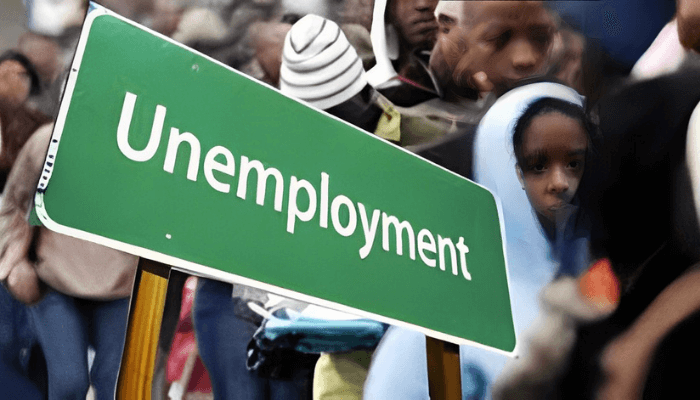Nigeria’s 2023 Labour Market Report: Unemployment, Informal Work, and Regional Disparities
By Matthew Eloyi
The recently released Nigeria Labour Force Survey by the National Bureau of Statistics (NBS) paints a complex picture of Nigeria’s labour market in 2023. While the overall unemployment rate was reported at a low 5.4%, the figures behind the numbers reveal significant disparities across regions, educational levels, and employment types, pointing to deep-rooted structural issues in the economy.
A Questionable 5.4% Unemployment Rate
At first glance, the 5.4% unemployment rate may seem like a positive indicator in a country where joblessness has historically been a major challenge. However, digging deeper into the report suggests this number may not fully capture the realities of the Nigerian workforce. For instance, the survey shows that over 92% of the employed population, around 77.6 million people, are engaged in informal employment. This indicates that while a large portion of the population is technically employed, they are likely involved in precarious jobs with low wages and limited job security, particularly in states like Kano and Lagos, which recorded the highest informal employment rates.
Moreover, the time-related underemployment rate, which measures those working fewer than 40 hours per week but are willing to work more, stood at 11.1%. This figure highlights a significant portion of the population that, while employed, is underutilized. Plateau State, for example, recorded an underemployment rate of 33.9%, a clear sign that many individuals are stuck in part-time or insufficient jobs.
Regional Disparities: Abia and Nasarawa at Opposite Ends
One of the most striking findings in the report is the sharp contrast in unemployment rates across different states. Abia State recorded the highest unemployment rate at 18.7%, while Nasarawa had the lowest at just 0.5%. This vast gap illustrates the uneven economic opportunities across the country, with some regions grappling with far greater job shortages than others. It also raises questions about the methodologies behind these figures, as the differences between states seem unusually large, considering Nigeria’s broader economic challenges.
Education Paradox: Higher Education, Higher Unemployment
Another paradox highlighted in the report is the unemployment rate by educational attainment. Contrary to expectations, individuals with post-secondary education had the highest unemployment rate at 9.4%, while those with no formal education had the lowest at 3.2%. This troubling trend suggests that Nigeria’s education system is failing to align with the demands of the labour market. Graduates face the highest risk of unemployment, potentially due to an economy that struggles to create enough high-skilled jobs to absorb the increasing number of educated individuals.
This misalignment highlights a need for deeper reforms in both education and employment policies, ensuring that skills learned in school match the needs of industries.
Rural Dominance and Gender Disparities
The report shows that the employment-to-population ratio was higher in rural areas (77.3%) compared to urban areas (68.7%). This reflects the dominance of agriculture and informal work in Nigeria’s rural economy, but it also raises concerns about the quality of employment in these regions. Rural employment may be masking the reality of underemployment and low productivity in agricultural and subsistence-based jobs.
Gender disparities were also evident, with males showing a slightly higher employment-to-population ratio at 73.7%, compared to females at 70.7%. Women also had a higher time-related underemployment rate (13.4%), indicating that, even when employed, many women face greater obstacles in accessing full-time work.
The Youth Crisis: NEET Rate of Concern
Perhaps one of the most alarming statistics is the NEET (Not in Employment, Education, or Training) rate for youth, which stood at 15.6% nationally. Abia State again showed a worrying trend, with a NEET rate of 38.1%, signalling a major crisis among its youth. The high NEET rate means that a significant portion of Nigeria’s young population is neither acquiring the skills nor gaining the work experience necessary to contribute productively to the economy. This poses long-term challenges for the country’s future workforce and economic development.
Conclusion: Beyond the Headlines
While the 2023 Labour Force Survey presents a somewhat optimistic picture with a low national unemployment rate, it also reveals deep-seated issues within Nigeria’s economy. From the dominance of informal work to regional imbalances and the troubling reality of educated individuals facing the highest unemployment rates, the report underscores the need for structural reforms. The government must focus on creating quality jobs, improving educational outcomes, and addressing the regional and gender disparities that continue to plague the Nigerian labour market. Without such measures, the numbers may improve, but the lived experiences of millions of Nigerians will remain unchanged.



